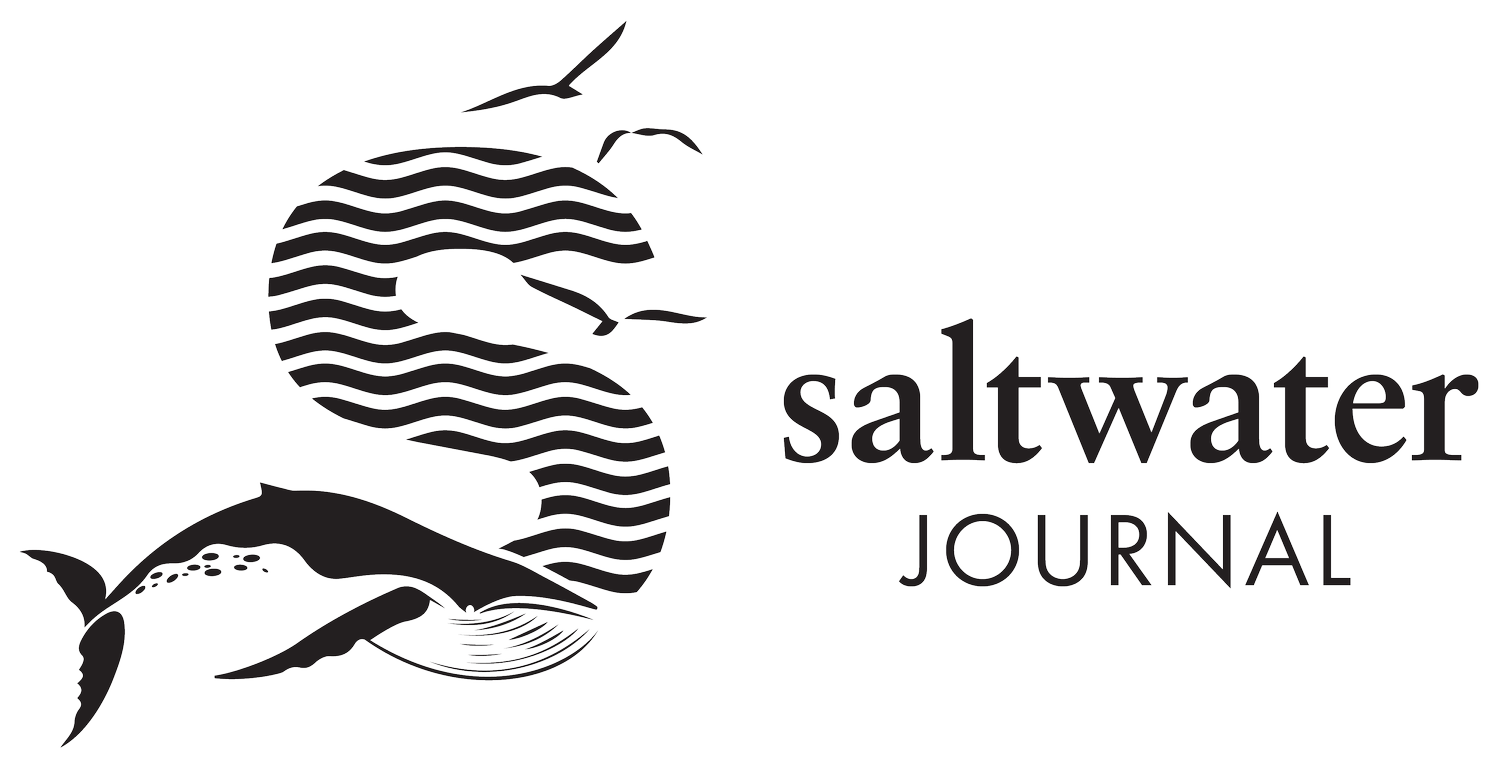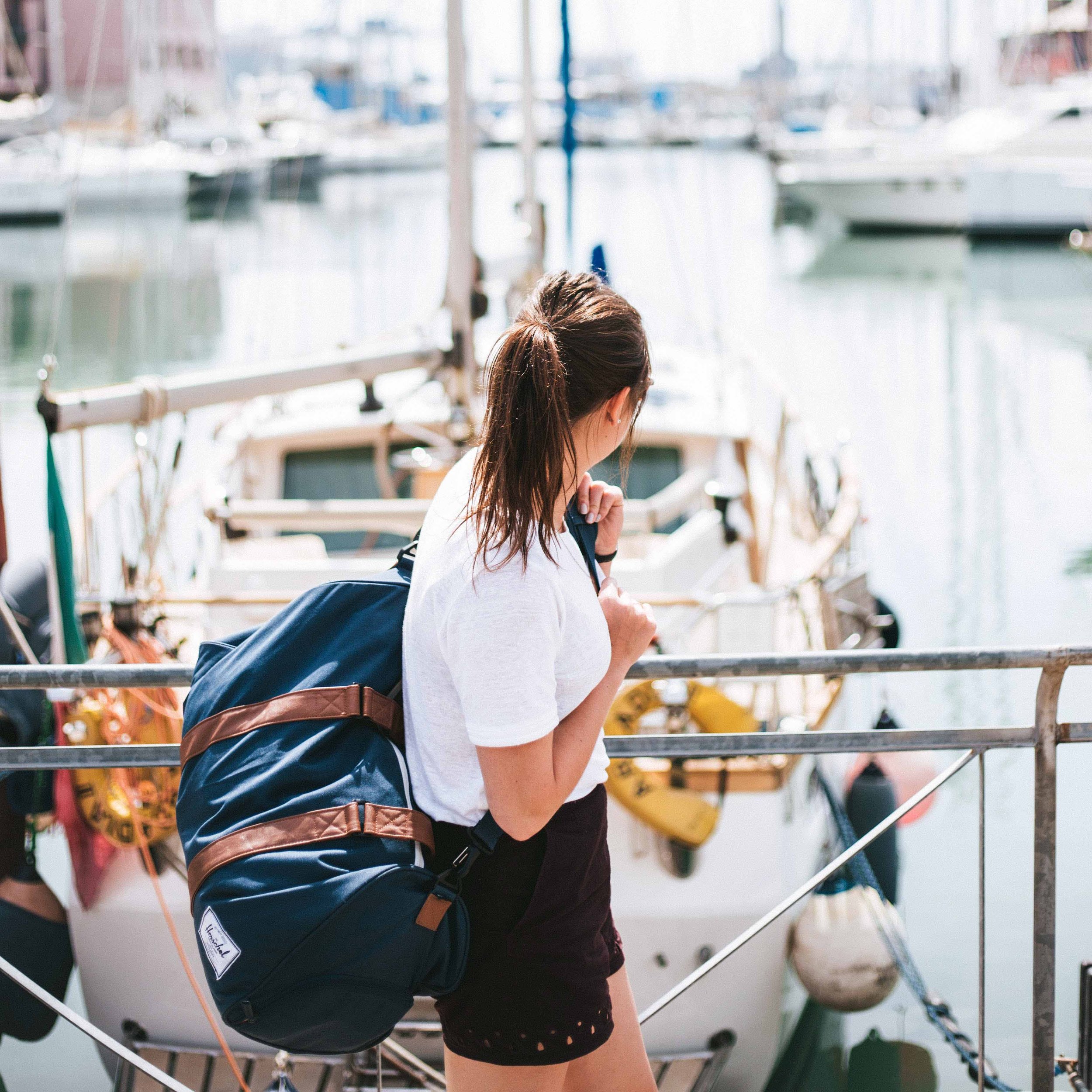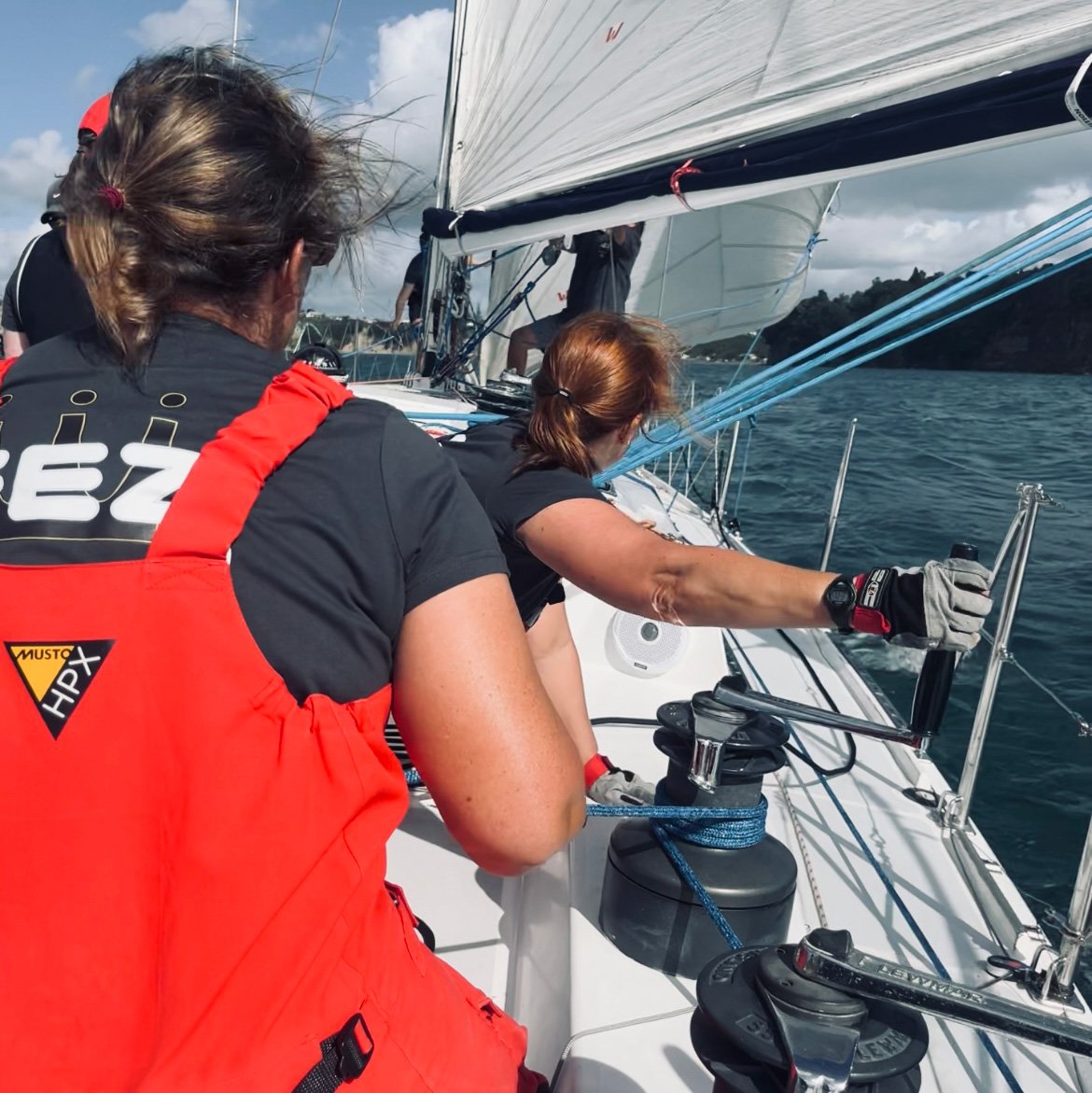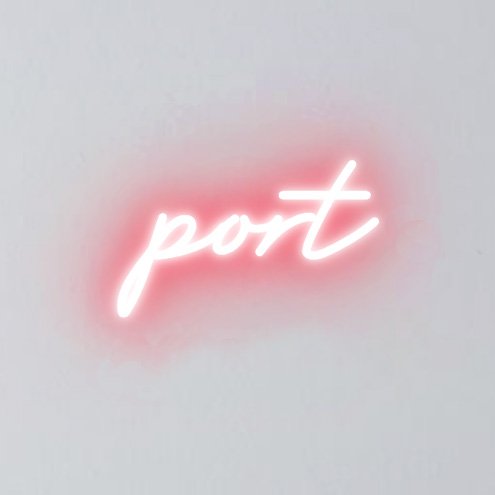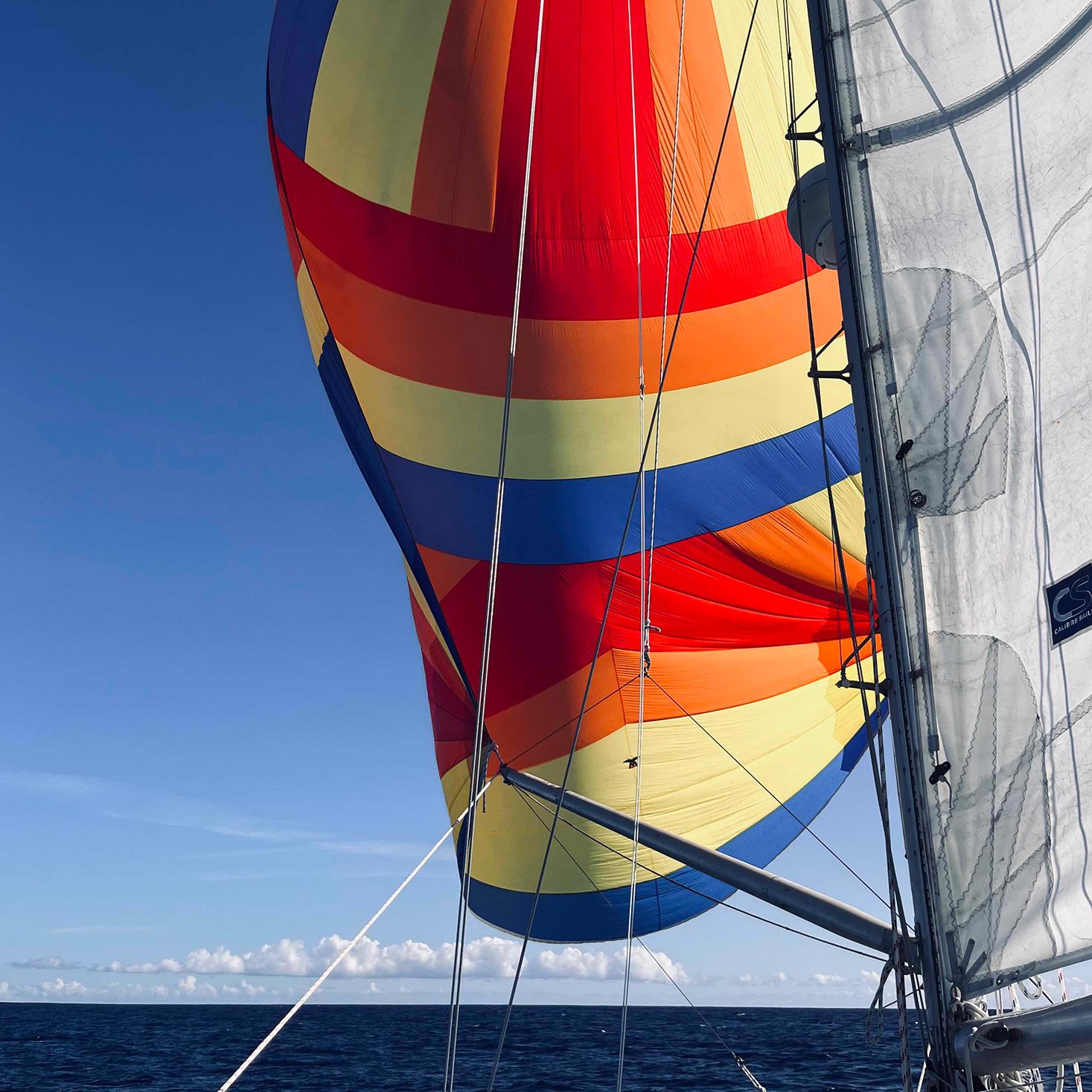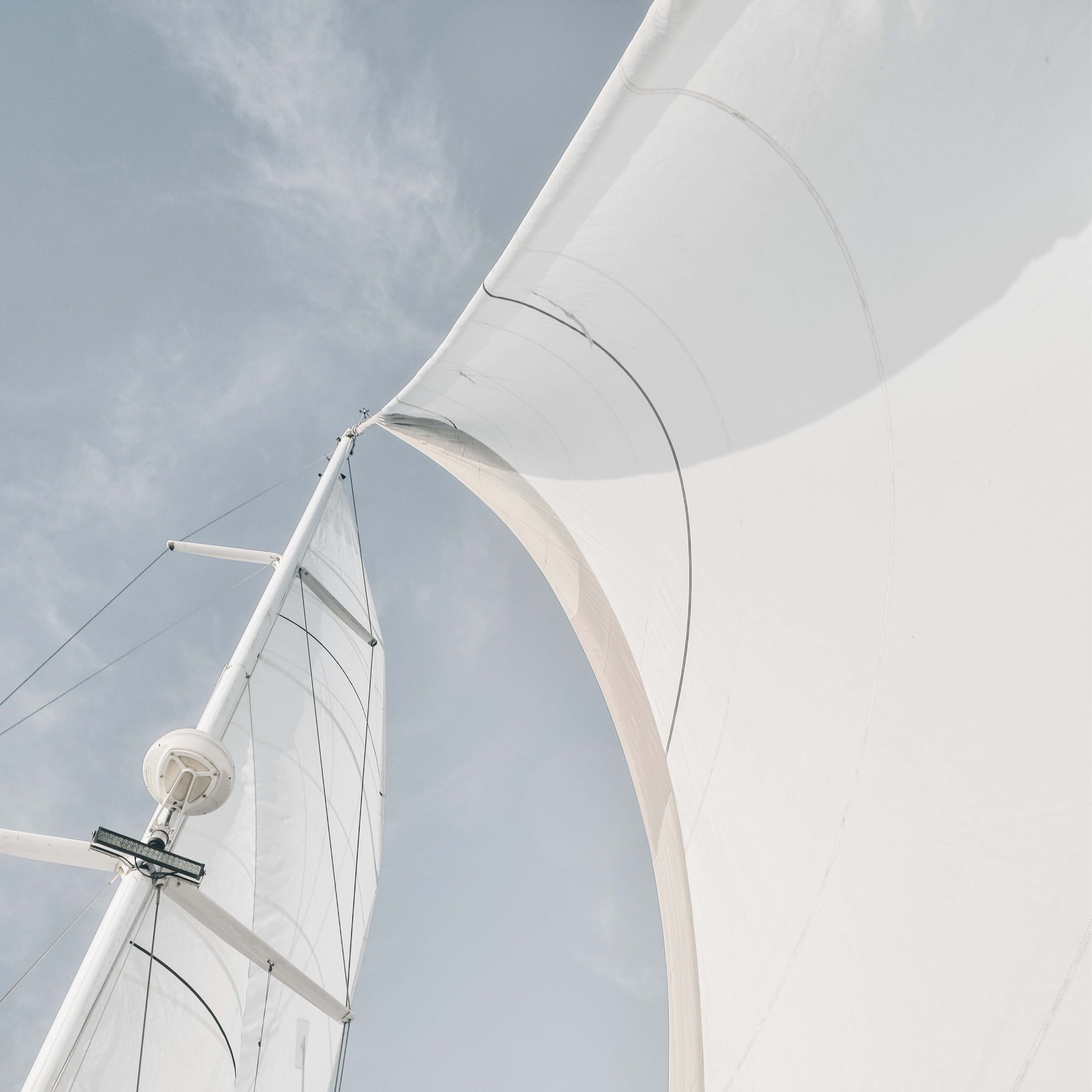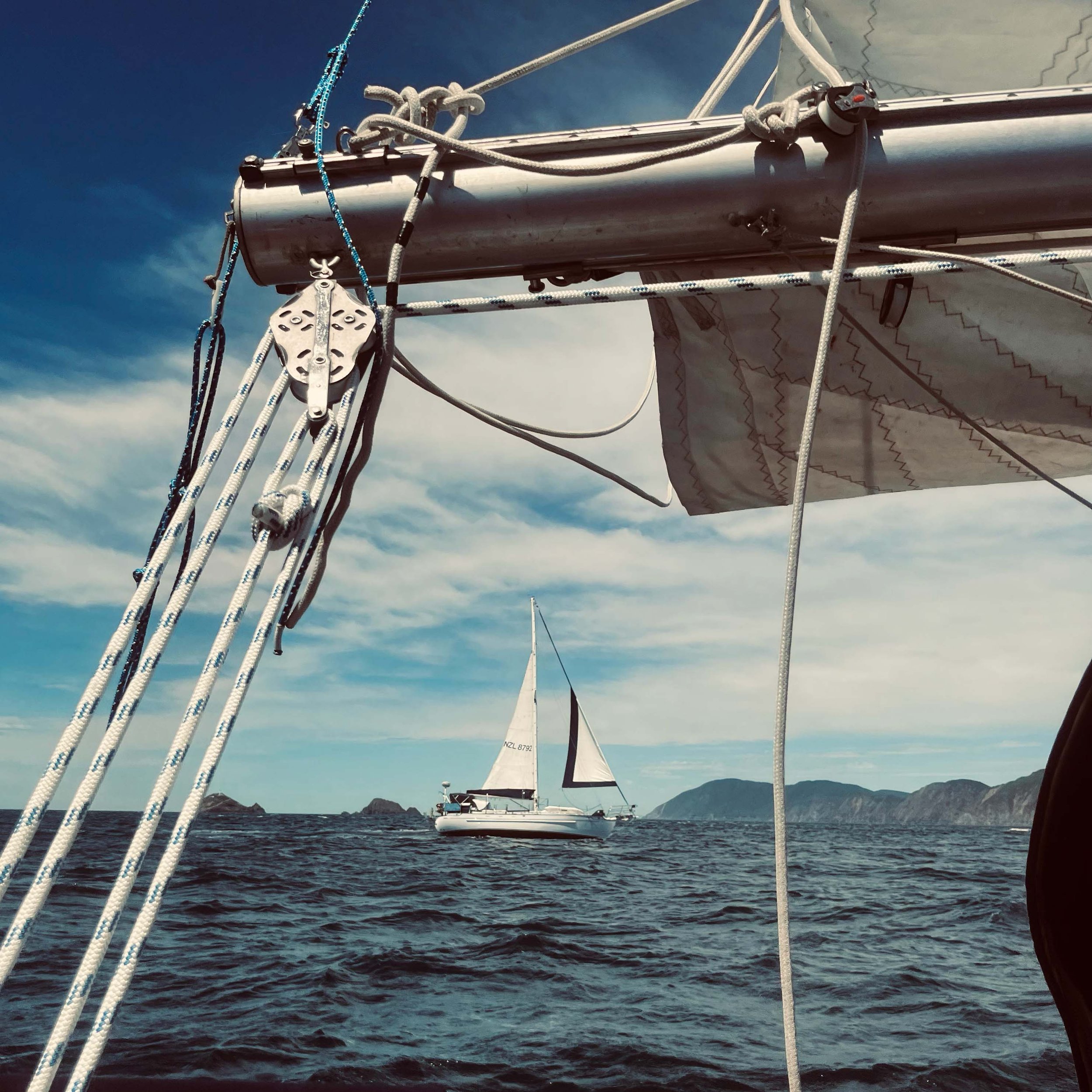Everyday Sailing Terms You Need To Know
Saltwater Journal is reader supported.
When you buy through our links we may earn an affiliate commission (at no extra cost to you)
Knowing everyday sailing terms is important for safety onboard and essential for finding your way around a yacht, and learning to sail.
There are hundreds of nautical terms but you don’t need to know all of them in order to start sailing or move aboard. I’ve only included words here that you’ll use on a regular basis. Like learning a new language, it’s less overwhelming to begin with the basics, so this article is the introduction “hello, my name is” to sailing — to get you on the water sooner and with more confidence.
Below you’ll find five main sections which give you context for each sailing term, so you’ll learn these much easier.
Sections
As you become familiar with sailing and life on a yacht, you’ll recognise these words and equipment (and the variation across different boats) and develop a better understanding of each role, and how to sail well. Before you know it, calling to “ease the mainsheet” will be second nature.
Galley — The kitchen on a yacht
Inside a yacht
Bilge: The lowest area inside a yacht’s hull which collects water. This is pumped overboard by a bilge pump, or by hand with a scoop and bucket.
Berth: A bed on a yacht. A slip or mooring can also be called a berth.
Bulkhead: The structural walls across the width of the interior.
Cabin: Bedroom on a yacht.
Chart: A nautical map of the ocean to show information such as water depth, seabed material, navigational aids and hazards and allow you to plot your course and position.
Companionway: Main entry hatchway/doors into the yacht from the cockpit.
Galley: The kitchen on a yacht.
Gimbals: The attachments which allow an object to swing and maintain an upright position despite the yacht’s motion. An oven is often gimballed so you can still cook levelly when the boat is heeled over.
Grab bag: Also called a ditch bag, panic bag or abandon ship bag — contains essential survival gear and food and water in an emergency. Find out what to pack in this.
Hatch: A window opening in the cabin roof (like a skylight).
Head: The bathroom on a yacht.
Lee cloths: Fabric material that clips onto a bunk like a safety net to keep you from rolling out of bed.
Salon: Living room or seated dining area onboard.
Seacock: A valve which shuts off an underwater through-hull fitting.
Through-hull fitting: An underwater inlet or outlet passing through the hull.
V-berth: A bed in the bow (front) of the yacht.
Quarter berth: Usually a single bed tucked under the cockpit at the rear (stern) of the yacht, where there’s not enough room for a cabin.
Time onboard and sailing practice will help you learn all the parts of a yacht
Sailing terms outside a yacht
Anchor: A large weighted anchor at the bow of your boat.
Ballast: Weight which gives stability to the vessel and is often added to the keel.
Bimini: A sun shade protecting the cockpit from the weather, and is usually a stainless frame covered with canvas.
Binnacle: A pedestal which holds the compass and navigation equipment in front of the helm.
Bow: Front end of the yacht.
Bowsprit: A spar/pole that extends off the front of some yachts to attach sail rigging.
Aft/Stern: Back end of the yacht.
Captain: Or Skipper. Responsible for the overall safe manning and operation of the yacht and crew.
Catamaran: A yacht with two hulls.
Centreboard: A retractable keel found on some yachts, which can be raised to allow the boat into shallower waters.
Cleat: Tie down point or securing device mounted to the deck which secures rigging or docking lines.
Cockpit: Area in the yacht with the steering and seating.
Cowl: A type of vent that lets airflow into the boat while keeping out rain, and sea spray.
Dinghy: Or Tender is a small boat with oars and/or an outboard motor to get you from your yacht to shore.
Dodger: Usually a stainless frame with canvas (but can be a built structure) which acts as a spray-hood protecting part of the cockpit and the entry to the companionway from rain and rough seas.
Dorade vent: These boxes work with cowls and allow air to pass through the inside chamber freely, but trap the rain or sea wash which drains out the side of the box.
Draft: The measurement from the yacht’s waterline to the bottom of the keel.
Fender: A long or round rubber buoy that’s hung off the side of the yacht or pontoon to prevent damage to the hull.
Ground tackle: The gear used to anchor your yacht including the anchor, chain and line.
Helm: The tiller or wheel for steering the yacht.
Lazaret: A storage locker at the aft end of the yacht.
Keel: The underwater fin that gives the boat stability and direction (see more about keel types here).
Painter: The line that secures the dinghy to the yacht.
Monohull: A yacht with one hull.
Multihull: A yacht with more than one hull such as a catamaran or trimaran.
Pulpit: The metal rails at the bow of the yacht to help keep crew onboard.
Pushpit: The metal rails at the back of the yacht to help keep crew onboard.
Tiller: Instead of a steering wheel, this is a long stick which operates the rudder.
Traveler: A sliding track that runs across the width of the boat and attaches to the boom to control the angle of the boom and mainsail to the mast.
Trimaran: A yacht with three hulls.
Rudder: Long steering fin at the back of the boat, which is controlled by the steering wheel or tiller.
Scope: The combined length of chain and line between the anchor and the yacht.
Scuppers: Drain holes in the deck.
Skeg: An extension of the keel that the rudder is fixed to, and can protect the rudder.
Spring line: Dock lines run from the midship of the yacht to the dock near the bow and the stern.
Stanchions: The metal posts around the edge of the yacht deck that hold the lifelines.
Toerail: A rail that runs around the perimeter of the deck to help keep things onboard.
Winch: A mechanical drum, rotated by arm strength or electric motor to adjust lines more easily.
Winch handle: Used to crank the winch by arm.
Windlass: A winch that controls the anchor being dropped and raised.
Don’t be put off by the many parts to sailing — once you’ve learned the ropes you’ll enjoy it even more
Sails and rigging
Batten: The battens are long, thin flexible strips inserted into the mainsail to help it stay open to the wind.
Block: A pulley.
Boom: This is the horizontal pole which extends from the bottom of the mast and holds the bottom of the mainsail. This can be adjusted towards the wind direction to capture wind and move the boat.
Boom vang: A device that holds the boom down to control the tension on the mainsail.
Backstay: The rigging that runs from the back of the boat to the mast head to stop the mast from falling forward.
Chainplate: A plate (often stainless) secured to the yacht hull to which the rigging is attached.
Clew: Back corner of a sail.
Ease: To let the sails out.
Forestay: The rigging that runs from the front of the boat to the mast head to stop the mast from falling backward.
Flogging: The awful noise the sail makes when it flaps around if there’s no wind in it.
Foot: Bottom edge of the sail.
Furling system: A rolling furler wraps the sail when it’s not being used. This can be within the forestay (eg: for a headsail) or a mast (for a mainsail).
Gooseneck: The point where the boom joins the mast.
Gunwale: pronounced ‘gunnel’. The top edge of the yacht hull.
Halyard: A line which attaches to a sail to hoist it up.
Hanks: Clips that attach to the luff (front edge) of a sail to the forestay.
Jacklines: Safety lines fastened and run the length of the yacht, to which a safety harness can be clipped to.
Ketch: A yacht with two masts.
Lazyjacks: Smaller network of lines that run from the mast to the boom and help contain the mainsail and stack it neatly as it’s lowered.
Leech: The back edge of a sail.
Lines: Onboard ropes are called lines.
Lifelines: Several lines that run through the stanchions around the perimeter of the yacht to help keep crew and gear onboard.
Luff: The front edge of a sail.
Mainsail: pronounced main’sil. The main sail of the boat that is hoisted up the mast and attached to the boom.
Mast: The vertical pole that towers above the yacht and is attached to the rigging and sails, along with items such as navigation lights, aerials and wind vanes.
Outhaul: This line is attached to the mainsail or the jib clew to control the foot tension, and determine the right sail shape for the amount of wind you’re sailing in.
Reef: Tying or rolling the sail to reduce its size in high winds.
Rigging: The wires and/or ropes that hold the mast in place and adjust the sails.
Running rigging: All the lines which control the sails such as the sheets and halyards.
Schooner: A yacht with two or more masts.
Shackle: A metal D or U shaped link which has a removable pin through the ends, often used in rigging.
Sheet: A line which connects to the clew (back corner) of a sail to control or trim it.
Shrouds: The wires or ropes which run from the deck chainplates to the mast to stop the mast moving from falling sideways.
Sloop: A yacht with one mast with a mainsail and a foresail.
Slugs: The fittings on the luff of the mainsail that slide into the mast track for raising the sail.
Spreaders: The horizontal arms that extend from the sides of the mast to hold the shrouds out from the mast.
Standing rigging: The wires and ropes, such as the shrouds and stays, that are permanently in place to hold up the mast.
Stays: The rigging that runs from the bow and stern to the mast top to keep the mast from moving forward or backward.
Telltales: Or ‘woolies’ are small pieces of wool or cotton attached to the sails to indicate wind direction and airflow across the sail.
Topping lift: A wire or rope which is fixed to the back end of the boom and runs to the mast top to control the height of the boom.
Trim: To adjust the sails.
Turnbuckle: Used to tighten the standing rigging.
Direction and weather
Abeam: When there’s another boat or object off the side of your boat 90degrees to the centre line.
Astern: Behind the yacht. Going in reverse is to go astern.
Centreline: An imaginary line that runs down the middle of the boat from bow to stern.
Beam: The width of the yacht at its widest point.
Beam reach: Sailing with the wind blowing 90degrees to the direction the yacht is headed.
Bearing away: Steering the yacht away from the direction the wind is blowing.
Gybe: Changing tack by turning the boat with the direction the wind is coming from, with the stern of the vessel turning through the wind.
Knot: The yacht speed is measured in knots. One knot equals one nautical mile per hour..
Lee shore: The shore onto which the wind is blowing.
Leeward: The direction that the wind is blowing.
Nautical Mile: A measure of distance on the water, equal to 1852 meters.
Port: The left hand side of the yacht when facing forward.
Starboard: The right hand side of the yacht when facing forward.
Swing: The circular area a yacht covers around its anchor point.
Tack: Changing direction by turning the boat across the direction the wind is coming from (preferable to a gybe).
True wind direction: The direction the wind is actually coming from.
Windward: The direction from which the wind is blowing.
Safety
EPIRB: Stands for Emergency Position Indicating Radio Beacon. This unit transmits a distress signal to alert search and rescue services in the event of an emergency and provides the yacht’s location.
Flares: Handheld flares used to attract attention in an emergency.
Lifejacket: Sometimes called a PFD (stands for Personal Floatation Device). This jacket is worn to keep you afloat if you fall overboard, and should have a sprayhood, harness clip, decent light, whistle and a PLB.
Liferaft: An automatic inflatable raft used in the event of abandoning a yacht.
Man over-board: An emergency call that alerts the crew that someone aboard has gone overboard and must be rescued.
Mayday: An emergency distress call to marine radio when there is imminent danger and need of immediate help.
Pan Pan: An urgent call used to transmit information about safety and/or vessel assistance is required. This signal has priority over all other communications except Mayday.
PLB: Stands for Personal Locator Beacon. This works in the same way as the EPIRB and notifies rescue services of your location in an emergency, but it is a smaller unit that can be attached to a lifejacket or carried with you.
Securite: (pronounced sea-cur-i-tay). This radio call issues boaties with navigational warnings, weather warnings or any other marine safety information.
VHF Radio: Stands for Very High Frequency Radio. This VFH radio can be a hand-held or fixed-mount unit, used for communication.
One thing I’ll add is that it’s easiest to learn sailing terms by being onboard — so however you can, find a yacht to sail on! That might mean joining a sailing club, meeting someone at your local marina or putting an advert up offering to crew.
Get amongst it, give it some effort and soon sailing gear, yacht parts and salty terms will be part of your everyday life.
